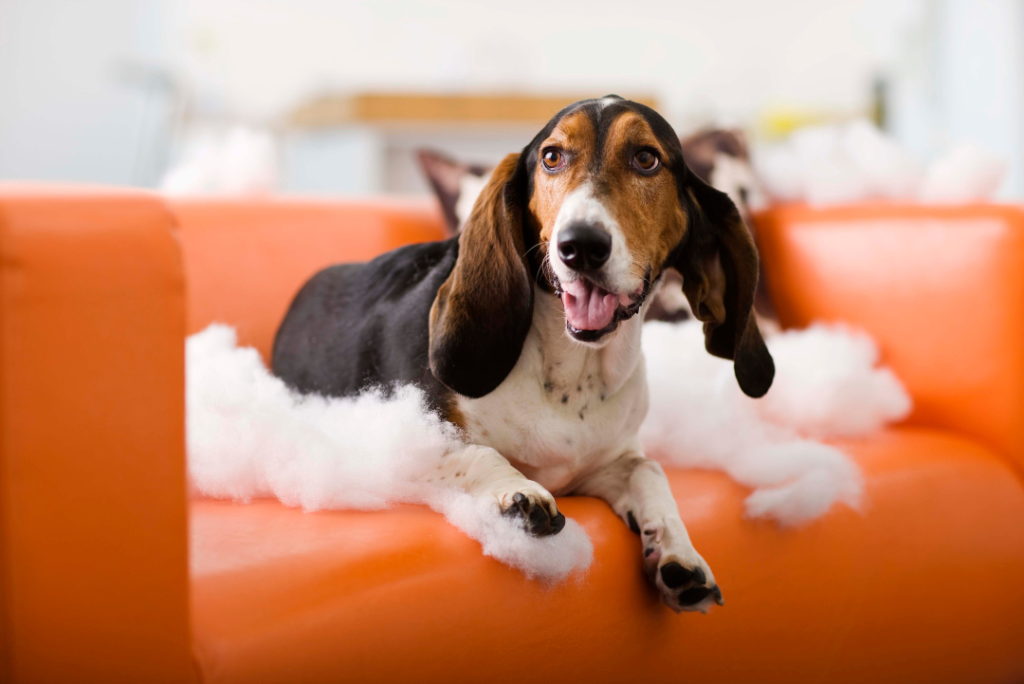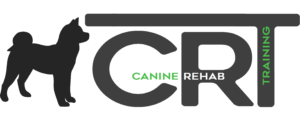How to stop destructive dog behavior !
Destructive dog behaviors are harmful actions by a dog to itself or its household. Destructive behaviors include chewing or biting household items like furniture and clothes, digging holes around the yard, pooping in the wrong places, excessive barking when left alone, and other activities that cause harm or disturbance in the household.
These behaviors can be caused by fear, isolation, lack of exercise, separation anxiety, obsessive-compulsive disorder, and illness. Destructive behavior in dogs can cause damage to valuable property, environmental disturbance to neighbors, unnecessary repair expenses, and stress on the dog owner.

Causes of destructive behavior in dogs.
Separation Anxiety
Separation anxiety is a common disorder in dogs. It’s often caused by the dog having been abandoned or abused.
Dogs are social animals and need to be around other people or animals, so they’re very likely to develop separation anxiety if left alone for long periods. The symptoms of this condition include barking, crying, and chewing on things inside or outside the house.
Boredom or lack of mental and physical stimulation
Inactivity can make dogs restless, and boredom is one of the most common reasons for destructive behavior in dogs. It can be challenging to manage for people who spend most of the day at work. When dogs get bored, they tend to tear up things, scratch floors, and chew objects they find around them. Lack of mental and physical stimulation like taking walks, playing with toys, and learning new tricks can cause boredom in dogs and inevitably lead to destructive behaviors.
Fear and Anxiety
Fear and anxiety are also common causes of destructive behaviors in dogs. Dogs may bite or chew on things to relieve stress when afraid or in stressful situations. They may bark or howl when anxious, urinate in the house when frightened, or even destroy furniture that’s upsetting them.
Obsessive-compulsive disorders (OCD) and other medical problems
Obsessive-compulsive disorders (OCD) are common in dogs. They’re characterized by repetitive behaviors, such as hand-wringing or pacing, that become compulsive and interfere with everyday life leading to destructive behavior.
Other medical problems can also cause destructive behaviors in your beloved pet. For example, gastrointestinal irritation and gum ache can cause destructive chewing in dogs. Pica, a condition that causes dogs to eat non-food items, can also result in destructive behaviors in the dog. The condition may have no underlying Dogs with illnesses but may also be caused by hormonal imbalances, emotional issues, or nutritional deficiencies in the dog.
Tips for managing destructive behavior in dogs
Identifying triggers
The first step in managing destructive behavior is identifying the trigger. If your dog has one or more destructive behaviors that seem to be triggered by specific situations, like the presence of other dogs, then it can help to be more observant and try to find out if there’s something specific about the company of other dogs that triggers them. It may be simply when he feels stressed by a much bigger dog or when he’s in contact with many other dogs simultaneously as opposed to just one other dog.
Another example is if he chews up your furniture when you have guests over for dinner but doesn’t do anything when no one’s around. This could mean he has anxiety being around strangers. Knowing what triggers these destructive behaviors is the first step to managing them.

Give them some chew toys.
If your dogs are chewing items they shouldn’t, it’s a good idea to buy them toys they can chew! Buy some edible toys they can chew on, some nylabones or some Kong chewy toys, and provide them with these one at a time. Also, remember to supervise them. Make sure they don’t bite off part of the toys and swallow them. Throw the toys away when they get too old and replace them when you notice that the dog is bored with them.
Exercise
Dogs need to be exercised regularly. The more exercise your dog gets, the better it will deal with pent-up energy and anxiety. Dogs can become withdrawn or even aggressive when they cannot expend all their energy through exercise, so make sure you take them on walks, play dates, and training programs to keep them active.
Remove Valuable Property from the dog’s reach.
As a dog owner, you need to make your space safe for the dog. Don’t throw your socks on the floor or leave valuable property around. Put your shoes in the right spots and small items away. These are important, especially when you get a new puppy. Like children, puppies may try and chew everything.
Using positive reinforcement training techniques
There are several positive reinforcement training techniques, such as clicker training and food-motivated behavior modification, that you can use with your dogs. For example, whenever your dog starts biting and chewing items they shouldn’t or digging, you can practice commands like “leave it,” “drop it,” and “go to your spot” and reward them with treats when they execute it correctly. This will help your dog master commands that you can use to prevent him from damaging property.
Train Your Dog
Ultimately, the best way to keep your dog from engaging in destructive behaviors is to make your dog a good dog! How do you do this? You train them. Let them know what’s good and what’s wrong. And the earlier you do this, the better.
In extreme cases of violent, destructive behaviors that you cannot control, seek help from a dog trainer or behaviorist. If you notice your dog reacting violently when you try to stop it from damaging things, then you should take it to a professional dog trainer like CRT K9, who will board your canine and administer special care and training to curb destructive behavior.
Take your dog to a vet.
Not all destructive behaviors are psychological; some may be caused by illnesses such as obsessive-compulsive disorders, dental issues, or gastrointestinal irritation. If you notice any symptoms of this illness or any other illness before the dog starts exhibiting destructive behaviors, or if these behaviors start suddenly, you should take the dog to see a vet immediately.
Best training techniques for preventing destructive behavior in dogs
Teaching the "leave it" and "drop it" commands
Teach the dog to pick up things and bring them back to you when you call them. Also, teach them how to get out of their crate or bed if they want to at night and then come back in when called. If your pup has a tendency toward destructiveness, give it something it usually destroys and tell him to drop it or leave it and reward him after he executes the action successfully.
Teaching the "go to your spot" or "go to your crate" command.
The go-to-your-spot command is a great way to train the dog, especially when you are home and need some time alone. Start with short periods, tell the dog to go to its crate or a specific spot in the house, and let it lie there for about 5-15 minutes.
This type of training is excellent when you notice your dog engaging in behaviors they shouldn’t. You can curb it before it becomes a habit. One thing you can do to reinforce obedience as a positive behavior is to reward him when he obeys (and not a moment before he obeys and the period of “spot-sitting” is over).
If you don’t have the time to teach your dog, you can board them with a professional who knows how to stop destructive behavior in dogs like CRT K9.
Give your dog plenty of exercises and mental stimulation.
Your dog should get daily physical activity, such as playing fetch or running around the yard. Outdoor activities are great for you and your pup. Try to find a place where you can regularly walk together. This will help keep them stimulated and rid them of boredom and anxiety.
You may want to keep toys around that require your dog’s attention, so he has something new to occupy his mind while you are away.
Conclusion
Destructive behavior in dogs can be frustrating for owners, but it is essential to remember that it is often a sign that the dog is scared, isolated, bored, or ill. With patience, consistency, and the proper training techniques, it is possible to stop destructive behavior in dogs and create a happier and healthier relationship with your furry friend.
